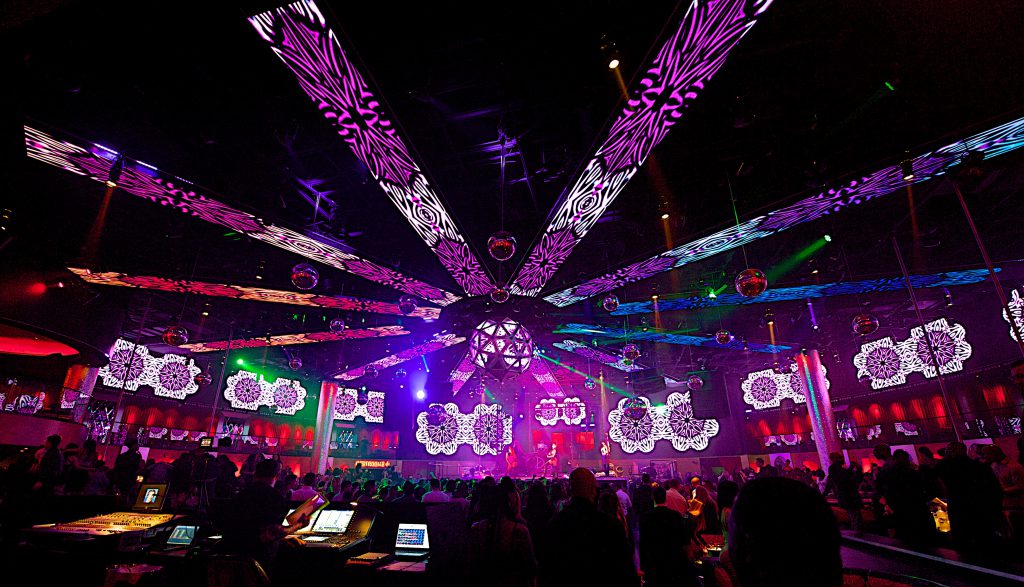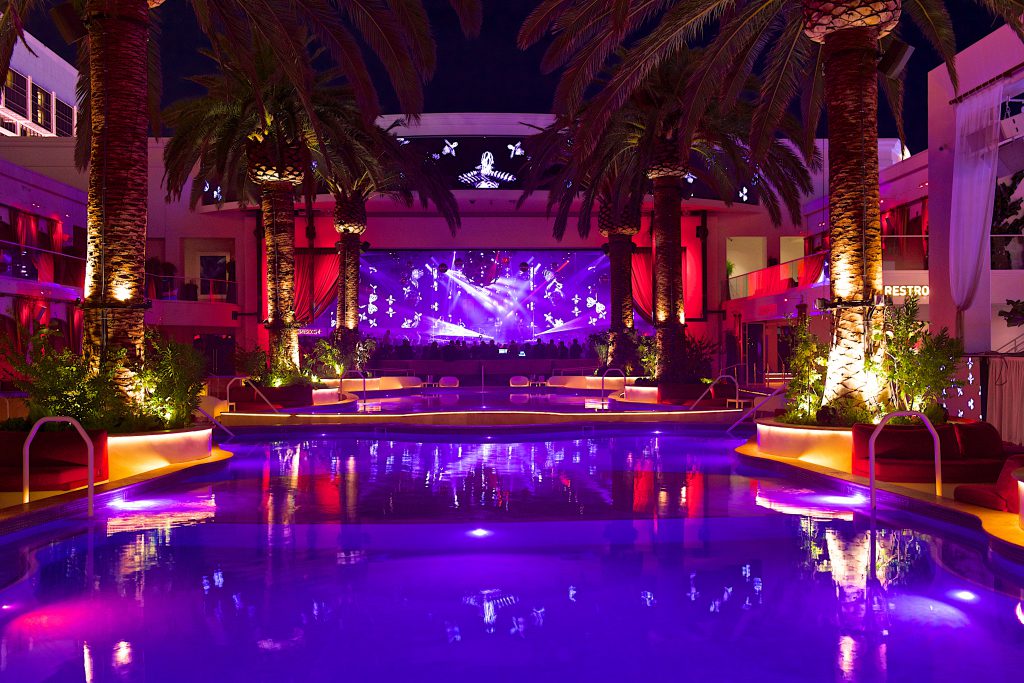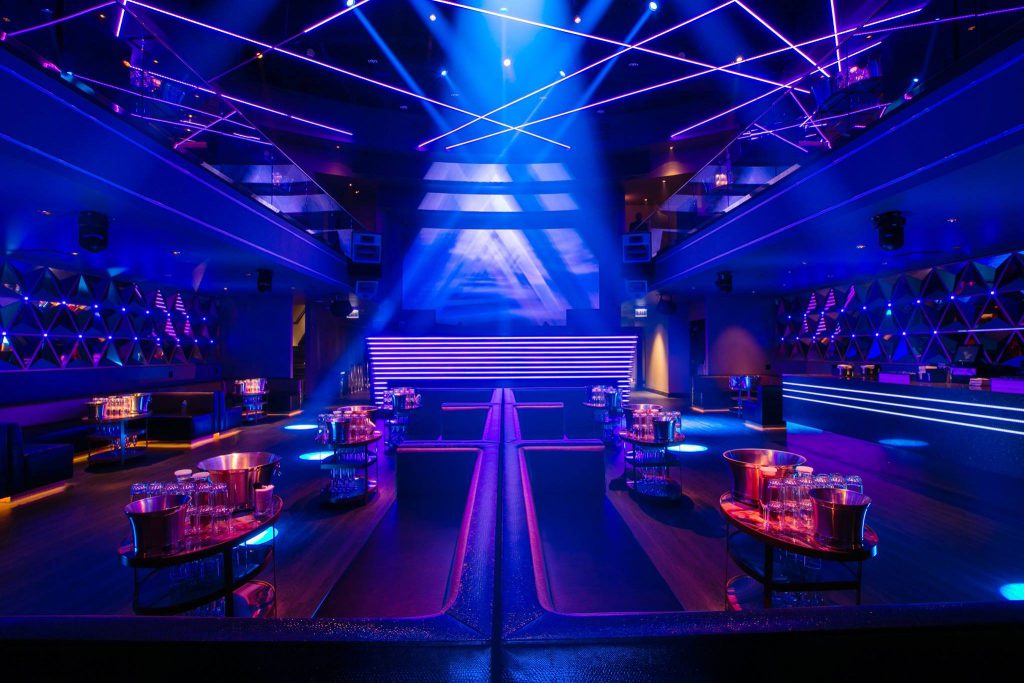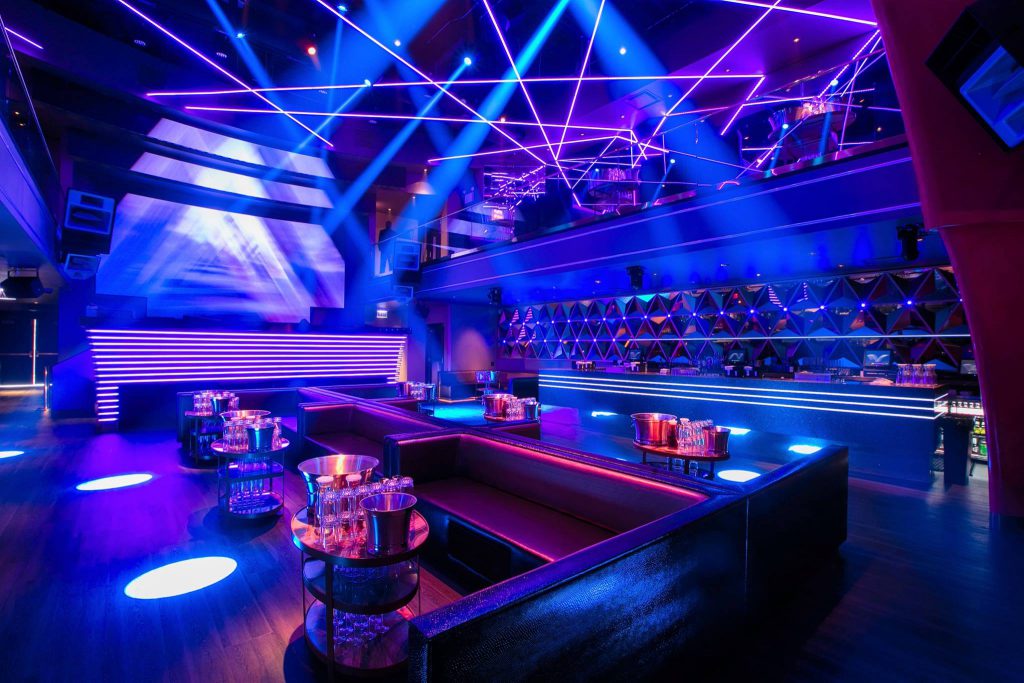Steve Lieberman: On Club Lighting
Posted on February 5, 2018
Steve Lieberman’s club lighting designs will often vary in their scope and underlying concept, but regardless of their ultimate look, there is always a powerfully intense emotional force that runs through them. For this Los Angeles-based designer, lighting a club isn’t merely about creating sleek, stylish looks. At a more fundamental level, his aim is to stir the heart as much as excite the eyes. It is by evoking passion, he believes, that a lighting designer can elevate the club experience.
The owner of SJ Lighting, Lieberman has designed high profile clubs like XS at the Wynn in Las Vegas and LIV at Miami’s Fontainebleau. Taking a break from his busy schedule the world-renowned LD sat down with us to talk about how he creates emotionally evocative club lighting.
What are the first things you look at when starting a club project? The architectural features of the room? Its size? The type of mood the club wants to convey? The type of entertainment?
“Every project has its own unique nuances. It’s important to be able to get the big picture prior to working on the job. Getting the most information we can gather from the interior designer, owner/operator, and any other relevant party, is critical to get started. Once we’ve established the grand scheme, we will assign zones to the project. The dancefloor, VIP areas, bar, peripheral locations, etc. You need to know the purpose of each zone; live music, DJs, VIP areas. The details will drive the design intent and need to be established before the job moves forward.
How does the DJ booth fit into your overall club design strategy? Do you make it the focal point? Do you treat it as a separate entity from the rest of the club?
“Blanket statements cannot be applied to design work. It really depends on the business model of the venue. If it is a DJ driven club, then typically the booth will be a focal point, with a creative design. When that is the case, the design should stand out as a feature, but the design philosophy should be cohesive with the rest of the venue.”

We notice that you don’t limit your use of moving heads to the dancefloor when you design a club. What role can movers play in club design beyond the dancefloor?
“Today’s nightclubs are very focused on VIP tables and bottle service. The tables are laid out in “tiers”, starting on the dancefloor and working their way out to the peripheral areas of the club. The production technology is most often centralized around the dancefloor, with the highest density of product being located there. However, the tables and areas off the dancefloor are equally as important to the venue to create a vibe. We don’t want patrons who aren’t on the dancefloor to feel like they are spectators. We want them to feel as if they are in the mix, just as if they were in the middle of the dancefloor. This is where production technologies need to be designed into those outer areas… to create energy and tie the room together.”
You also have made great use of pixel mapped strips in your club designs. Any advice on using these effectively in clubs?
“Pixel mapping is a tremendous tool available to us. It offers the ability to outline and highlight details of the architecture, in addition to more traditional applications of theatrical design. My advice would be to use it carefully – don’t overcook it…There are obvious places that design elements work well… and then there are areas that seem forced. It’s a balance.
On the subject of balance, how do you balance video walls and lighting in club designs?
“In any design, there needs to be ratios that are appropriate. Video and lighting are high visibility elements. We do design studies of various viewpoints and perspectives throughout a project. I wouldn’t say it’s a balance between these two disciplines – it is more an overall balance of design application.”
Have the expectations that club owners have for lighting changed in recent years as technology has given us more lighting tools?
“Technology is more accessible than it has ever been. Social Media, Google, and the internet have given everyone the ability to research what’s out there. Club owners and operators have always had expectations, however it is now easier for them to articulate their ideas. I’ve always welcomed design conversation and interaction with the owners. When the job is done… I leave, and they stay. So they need to be happy with the end result.”

Photo: Francis Son
It seems that clubs today are more likely to use lighting to separate different areas like a VIP room from the bar, or the dancefloor from the lounge. Any advice on creating this sense of separation?
“Whenever we layout a space, we will identify zones. Whether they are VIP areas, dancefloors, bar areas, general population; the lighting will help delineate one from the other. Design elements will be cohesive, but there will be a transition detail that will create a “line”. Sometimes its based-on architecture; other times it is more subtle.”
Club designs always have to look current. So, when you do work for a club do you try to create a design that will lend itself to easy upgrading down the road? Or is it a case that when a design shows signs of age, it’s time for a complete overhaul?
“Our philosophy on design is not about using the latest technology. It is focused on application and the execution of concepts and details. The specifications fill a requirement, but do not dictate the design.”
You’ve done so many high-profile clubs, yet none of them have the same look. What’s the secret to keep club designs original and fresh?
“Obsessive Compulsive Disorder!”
If you had to sum it up in a few words, what should a lighting design do for a club?
“Create an emotional response to the vibe of the party and enhance the musical experience. Highlight and detail architecture. Tell a story.”

Photo: Francis Son